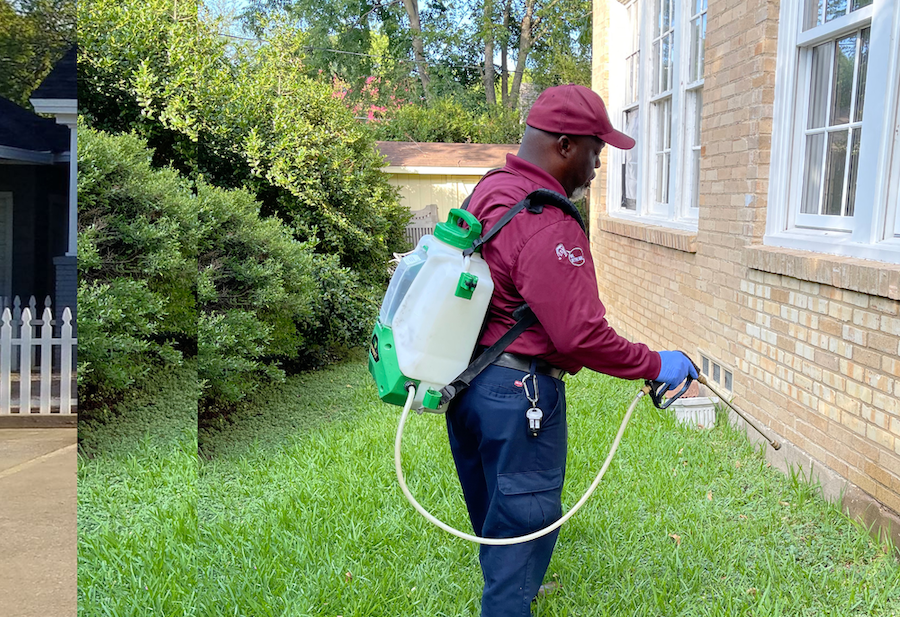A1 Bed Bug Exterminator Charlotte - Efficient and Economical Services
A1 Bed Bug Exterminator Charlotte - Efficient and Economical Services
Blog Article
Bed Insect Therapy Malfunction: Contrasting Chemical Vs. Non-Chemical Solutions
In the realm of insect control, specifically when handling the consistent issue of bed bugs, the choice in between chemical and non-chemical therapy solutions can be a critical one. Both methods provide distinctive advantages and disadvantages, influencing variables such as efficiency, safety and security factors to consider, and general expense. By checking out the nuanced details of each approach, a clearer understanding of which path to go after in dealing with a bed insect invasion can be achieved.
Efficiency of Chemical Treatments
Chemical treatments for bed bug problems have actually been widely identified for their potent and fast efficiency in removing these insects. When thinking about the effectiveness of chemical therapies, it is important to comprehend that they can give a quick and thorough service to a bed bug trouble. Expert pest control operators usually rely on insecticides to target bed insects at numerous stages of their life cycle, consisting of eggs, grownups, and fairies. These chemicals usually function by interfering with the bed bugs' nerves, leading to paralysis and eventual fatality.
Additionally, chemical therapies have the advantage of offering residual results, indicating that they can remain to eliminate bed bugs even after the first application. This residual action is particularly useful in combating any possible re-infestations. In addition, the fast action of chemical therapies can bring relief to individuals facing serious bed insect infestations, allowing them to reclaim control of their living areas quickly.
Safety Interest In Chemical Solutions
When using chemical remedies for bed pest therapy is making sure the safety of occupants and the environment,One vital facet that requires mindful factor to consider. While chemical treatments can be efficient in eliminating bed pests, they may position risks otherwise handled correctly. Among the key safety concerns with chemical options is the possible damage they can create to human health and wellness. Exposure to certain chemicals made use of in bed pest treatments can cause respiratory system problems, skin irritation, or various other unfavorable responses, specifically in people with pre-existing conditions or sensitivities. In addition, improper application or dosage of chemical pesticides can cause hazardous residues remaining in the cured area, posturing long-term wellness dangers to passengers.
Furthermore, the ecological impact of chemical options is an additional considerable factor to consider. Some pesticides used in bed pest treatments may be damaging to advantageous insects, wild animals, and environments if they leach right into the soil or water systems. It is important to utilize chemical therapies carefully, complying with security guidelines, and taking into consideration much less harmful alternatives to mitigate these risks and guarantee the risk-free and efficient monitoring of bed pest infestations.
Benefits of Non-Chemical Techniques
Taking into consideration the potential security concerns and ecological effect related to chemical solutions for bed bug treatment, exploring non-chemical methods offers an appealing alternative with several unique advantages. Non-chemical approaches supply a more secure option for households, specifically those with individuals, kids, or family pets sensitive to harsh chemicals. These methods remove the risks of direct exposure to toxic materials, lowering the capacity for unfavorable health and wellness effects. Moreover, non-chemical therapies are eco-friendly, as they do not add to air or water air pollution, making them a lasting selection for bug control.
Furthermore, non-chemical solutions can be reliable in targeting bed bugs, including hard-to-reach locations where chemical treatments might not pass through - A1 exterminator charlotte nc. Techniques such as heat therapy, vacuuming, heavy steam cleaning, and mattress coverings offer thorough obliteration without a knockout post the use of damaging chemicals.
Limitations of Non-Chemical Treatments

Furthermore, non-chemical therapies often require numerous applications to achieve effective elimination. This can be lengthy and might not constantly assure complete removal of all bed pests and their eggs, especially in covert or hard-to-reach places.
Furthermore, the success of non-chemical treatments greatly counts on proper execution and thoroughness, which can be challenging for people without expert knowledge. Poor application of non-chemical methods may cause incomplete elimination, causing consistent invasions and the demand for extra therapies.
As a result, while non-chemical therapies have their advantages, it is vital to acknowledge these limitations and consider them when identifying the most reliable technique for taking care of bed insect infestations.
Price Contrast: Chemical Vs. Non-Chemical Options
Provided the limitations connected with non-chemical treatments, a vital facet to evaluate in the context of bed bug monitoring is the price comparison between chemical and non-chemical choices. Chemical treatments typically involve the application of pesticides published here by specialists, which can range from $250 to $900 per area, depending on the intensity of the problem and the size of the location to be dealt with. In contrast, non-chemical treatments like warmth treatment or steam can be extra costly, with costs varying from $1,000 to $6,000 for a whole home. While the preliminary expense of chemical therapies may seem lower, multiple treatments may be needed to completely get rid of the infestation, possibly increasing the total price. On the other hand, non-chemical alternatives might give a much more environment-friendly and lasting service, although they can be cost-prohibitive for some people. Ultimately, when thinking about the price of bed bug treatment options, it is important to consider the ahead of time expenses versus the performance and lasting sustainability of the picked approach.
Final Thought

Considering the possible safety and security problems and ecological impact connected with chemical remedies for bed bug treatment, checking out non-chemical methods presents an encouraging choice with a number of distinct advantages.Offered the limitations associated with non-chemical treatments, an essential element to examine in the context of bed insect management is the expense contrast between chemical and non-chemical choices. In comparison, non-chemical treatments like warm treatment or vapor can be more costly, with expenses ranging from $1,000 to $6,000 for an entire home. While the preliminary price of chemical therapies might appear reduced, multiple treatments may be called for to totally eliminate the infestation, possibly raising the overall expense.In final thought, when contrasting chemical and non-chemical bed bug therapy alternatives, it is essential to think about efficiency, security, benefits, limitations, and cost.
Report this page